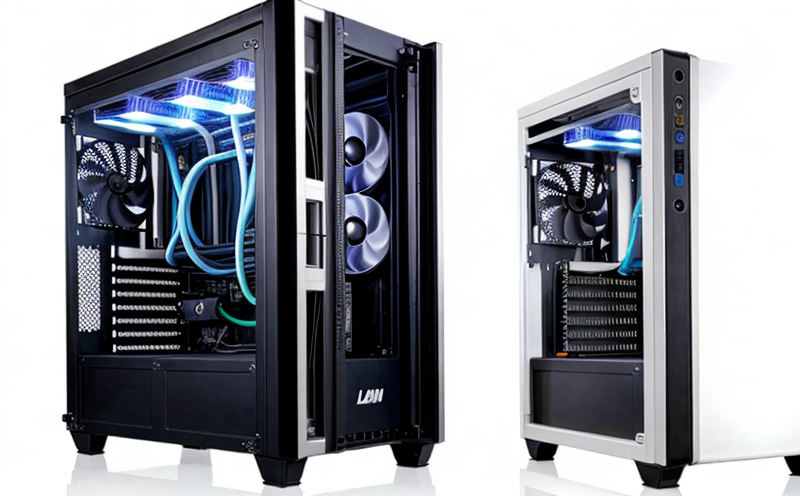EN 1886 Performance Testing of AHU Components
The European Standard EN 1886 specifies a method for determining the performance parameters and capacities of air handling unit (AHU) components. This testing is crucial in ensuring that HVAC equipment meets stringent quality standards, thereby enhancing operational efficiency and reliability. The standard covers various aspects such as airflow, pressure drop, sound power level, and energy consumption.
Quality managers and compliance officers rely on this test to validate the performance of their HVAC systems against regulatory requirements. R&D engineers use it to optimize designs for better efficiency, while procurement teams ensure that they receive products that meet these high standards.
The testing procedure involves measuring key parameters under specified conditions, which include temperature, humidity, and air velocity. Specimen preparation is essential; this typically involves installing the component in a controlled environment where it can undergo rigorous testing without external interference. The apparatus used includes pressure gauges, airflow meters, sound level meters, and energy consumption meters.
Acceptance criteria are strictly defined within EN 1886 to ensure consistency across all tests. For instance, the allowable deviation from nominal values is ±5%, which ensures that any discrepancies can be attributed to measurement error rather than inherent design flaws. Compliance with these criteria guarantees reliable and efficient HVAC systems.
Real-world usage notes highlight the importance of regular testing for maintenance purposes. By periodically retesting components, facility managers can identify early signs of wear or degradation, allowing timely interventions that prevent costly breakdowns. Additionally, this testing supports sustainability initiatives by optimizing energy consumption and extending equipment lifespan.
- Regular performance testing not only ensures compliance with regulatory standards but also enhances the overall reliability and efficiency of HVAC systems.
- By adhering to EN 1886, organizations demonstrate their commitment to quality and sustainability, which is increasingly valued by stakeholders and customers alike.
Quality and Reliability Assurance
The testing process outlined in EN 1886 plays a pivotal role in maintaining the highest standards of quality and reliability in HVAC equipment. By adhering to this standard, manufacturers can ensure that their products perform consistently across various operational conditions. This consistency is vital for building owners and operators who rely on dependable HVAC systems.
The testing protocol provides detailed guidance on how to measure critical parameters such as airflow, pressure drop, sound power level, and energy consumption. Each parameter is measured under controlled conditions that simulate real-world operating environments. This approach ensures that the results obtained are representative of actual performance in operational settings.
For quality managers and compliance officers, this testing serves as a critical tool for validating product specifications against regulatory requirements. It also supports internal audits and third-party inspections, ensuring that all aspects of the HVAC system meet or exceed industry standards. The reliability aspect is particularly important for R&D engineers who use test results to refine designs and improve performance.
Regular testing not only maintains compliance but also enhances the overall efficiency of HVAC systems. By identifying potential issues early on, maintenance teams can implement corrective measures before they lead to costly failures or downtime. This proactive approach contributes significantly to the long-term reliability and sustainability of HVAC installations.
International Acceptance and Recognition
The European Standard EN 1886 is widely recognized and accepted across Europe and beyond, making it an essential tool for manufacturers, installers, and operators of HVAC systems. Its international acceptance ensures that products tested according to this standard are compatible with global market requirements.
Recognized by organizations such as the European Commission and industry bodies, EN 1886 has established itself as a benchmark for quality in HVAC equipment testing. This recognition enhances trust among stakeholders and facilitates seamless compliance across different regions. Compliance officers find it particularly useful due to its universal applicability.
The standard's detailed specifications and rigorous testing procedures provide consistent results that are respected worldwide. This consistency is crucial for companies operating internationally, as they can rely on standardized test results regardless of location. Additionally, the global acceptance of EN 1886 fosters collaboration between manufacturers and suppliers, enhancing innovation and competitiveness in the HVAC sector.
The widespread use of this standard also supports sustainability initiatives by promoting energy-efficient products that meet environmental targets set by various international bodies. By adhering to these standards, organizations contribute positively to global efforts towards reducing carbon footprints and promoting sustainable practices.
Environmental and Sustainability Contributions
- The testing process outlined in EN 1886 contributes significantly to environmental sustainability by ensuring that HVAC components are energy-efficient. Efficient systems consume less electricity, thereby reducing greenhouse gas emissions.
- By adhering to this standard, manufacturers can produce products that meet strict efficiency criteria, which is crucial for meeting international environmental goals.
- The testing process also helps in identifying and addressing inefficiencies early on, allowing for timely improvements that enhance overall sustainability.





